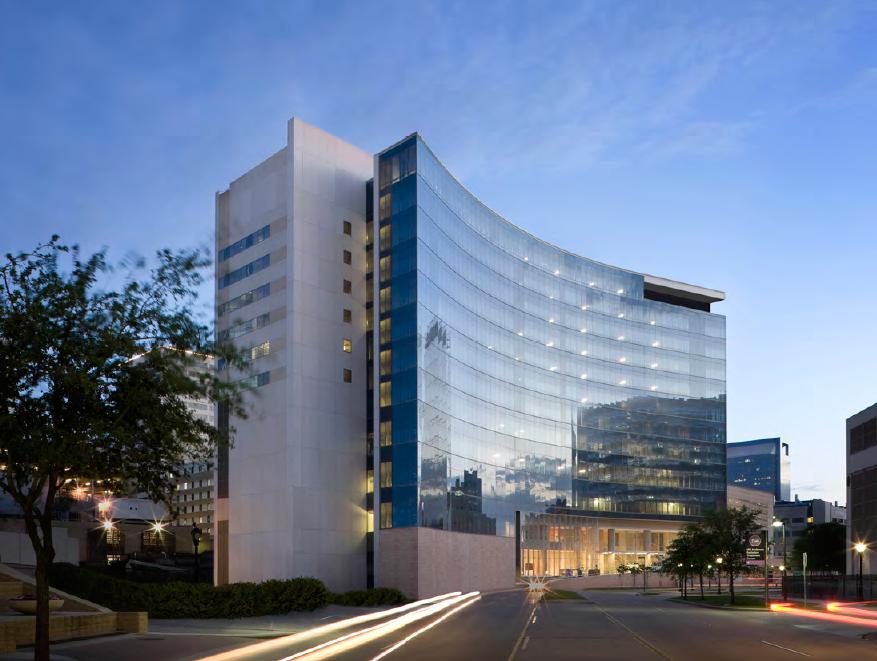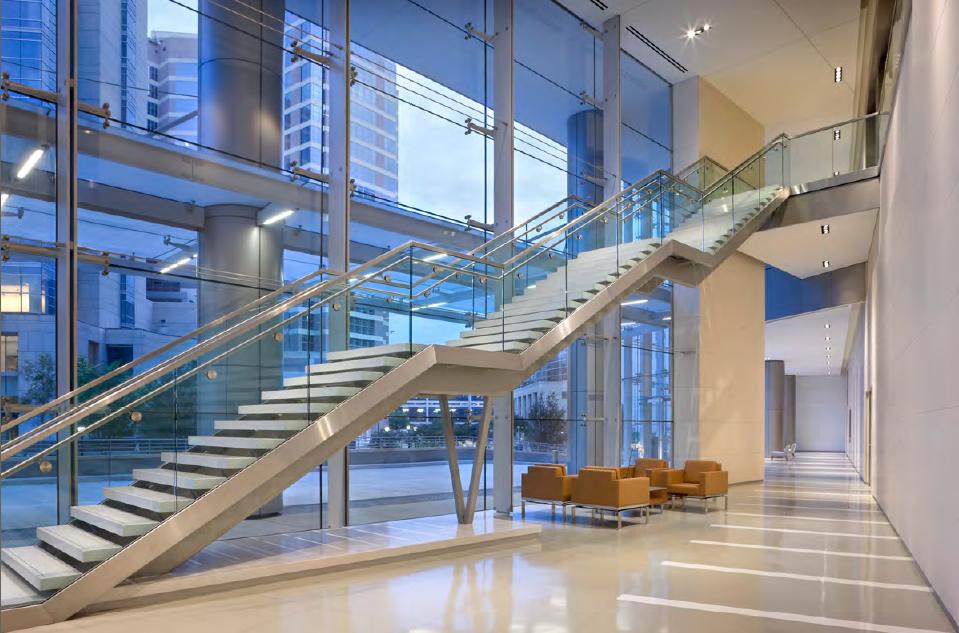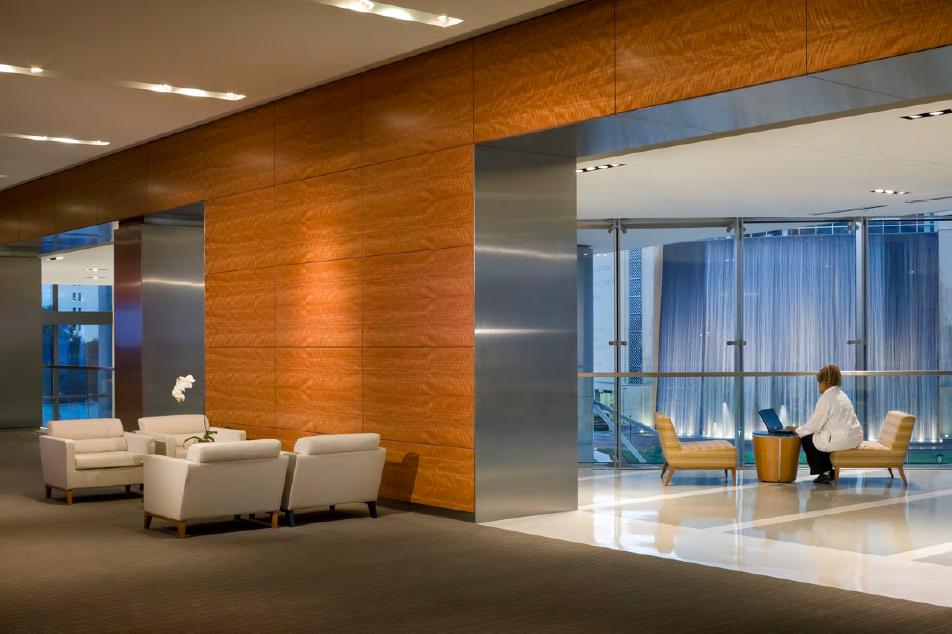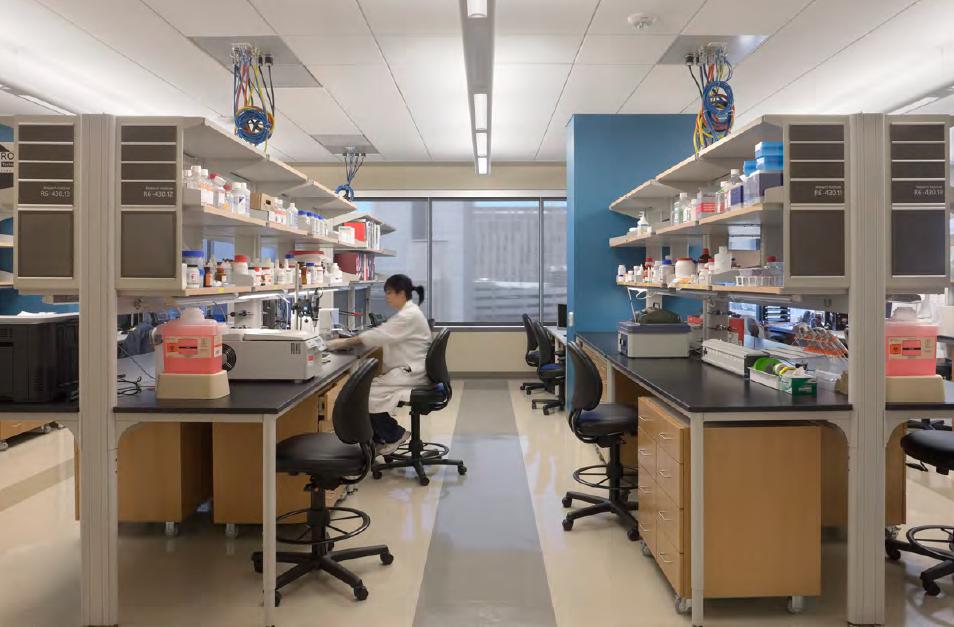Subscribe Now
The Methodist Hospital Research Institute Opens in Houston
An advanced technology facility dedicated exclusively to medical research in the heart of the Texas Medical Center
 Houston, TX — International architecture firm, Kohn Pedersen Fox Associates (KPF) and nationally recognized healthcare, science and technology architect WHR Architects, are proud to announce the opening of The Methodist Hospital Research Institute. KPF was the design architect and WHR Architects was the executive architect of this world-class facility.
Houston, TX — International architecture firm, Kohn Pedersen Fox Associates (KPF) and nationally recognized healthcare, science and technology architect WHR Architects, are proud to announce the opening of The Methodist Hospital Research Institute. KPF was the design architect and WHR Architects was the executive architect of this world-class facility.
Equipped with the world’s most advanced technology to help research scientists, physicians, and engineers cure diseases, the 12-story, 440,000 square foot facility was designed to advance the hospital’s mission to cure diseases through innovative translational research, with the ultimate goal of changing the future of medicine.
Prominently situated on Bertner Avenue on the Texas Medical Center’s (TMC) north campus and dedicated to translational research, the new facility contains six floors of open research space, housing a variety of laboratories and support spaces that combine to form a collaborative research facility for the study of a wide range of diseases including cancer, heart and neurological diseases. Leveraging its physical connection to the hospital, the Research Institute pursues a “bench to bedside” approach that streamlines the process of translating laboratory research to treatments and cures for the patients. The building contains a full complement of highly advanced core facilities, including a full imaging and molecular imaging suite, state-of-the-art equipment and even its own cyclotron.
President and CEO of The Methodist Hospital Research Institute, Mauro Ferrari, said: “Our approach is genuinely multi-disciplinary; fueled by unrestrained creativity; driven by new technology; aggressively focused on human disease and its treatment; and both literally and figuratively just steps from the patient’s bedside.” 
According to KPF Design Principal Jill Lerner: “With the building design, we sought to provide well-designed, flexible labs, along with a range of gathering spaces for the hospital and research community. The architecture creates a dramatic presence along Bertner Avenue, with its curved façade, presenting a welcoming entry to the institute at the heart of the Texas Medical Center.”
Peter Lotz WHR Architects’ principal-in charge of the project added, “Working with the visionary team at The Methodist Hospital, the focus was on clearly on collaboration. As we designed the next generation of lab spaces for multidisciplinary teams that will include MDs, PhDs, engineers, chemist and biomedical and nanomedical researchers, our own team approach was inclusive and integrated in order to deliver the best possible design solutions.”
 The new Research Institute’s massing expresses the internal functions of research offices along the curved façade to the east and the laboratories to the west. Common break-out areas connect the labs vertically, encouraging interdisciplinary communication and providing opportunities for informal gatherings. Bridge connections to the existing hospital are proposed at several floors to facilitate translational research and a sense of professional community. The building’s location in the center of the Texas Medical Center has already made its auditorium a “go to” destination for meetings and presentations that extend beyond The Methodist Hospital to other institutions in the TMC and national organizations like the NIH
The new Research Institute’s massing expresses the internal functions of research offices along the curved façade to the east and the laboratories to the west. Common break-out areas connect the labs vertically, encouraging interdisciplinary communication and providing opportunities for informal gatherings. Bridge connections to the existing hospital are proposed at several floors to facilitate translational research and a sense of professional community. The building’s location in the center of the Texas Medical Center has already made its auditorium a “go to” destination for meetings and presentations that extend beyond The Methodist Hospital to other institutions in the TMC and national organizations like the NIH
The highly flexible design provides labs, offices, and amenities for 90 principal investigators as well as 800 post-docs, trainees and staff. A generous driveway drop-off area enables the hospital to accommodate users of both the Research Institute and the existing and expanded hospital. Adjacent to the lobby, a comprehensive imaging suite is easily accessible and connects back to the main hospital. A distinctive stair connects the two-story lobby with second floor pre-function, conference and auditorium spaces. A prominent terrace at level 12 overlooks Bertner Avenue and is adjacent to facilities for faculty presentations.
 While the design accommodates all laboratory needs and support facilities, and serves all intended purposes, it is designed to accommodate expansion and anticipates the needs of future lead researchers yet to be recruited and projects yet to be conceived.
While the design accommodates all laboratory needs and support facilities, and serves all intended purposes, it is designed to accommodate expansion and anticipates the needs of future lead researchers yet to be recruited and projects yet to be conceived.
Tags:
Posted January 6, 2011
More Articles:
- Coverings 2024
Apr 22, 2024 – Apr 25, 2024 - Hospital, Outpatient Facilities & Medical Office Buildings Summit
Apr 25, 2024 – Apr 25, 2024 - CxA Workshop & Exam
Apr 29, 2024 – Apr 30, 2024 - EMP Seminar & Exam at CxEnergy 2024
Apr 29, 2024 – Apr 30, 2024 - CxEnergy
Apr 29, 2024 – May 2, 2024 - PHCC West 2024
Apr 29, 2024 – May 2, 2024 - Lean in Design Forum 2024
May 1, 2024 – May 2, 2024














